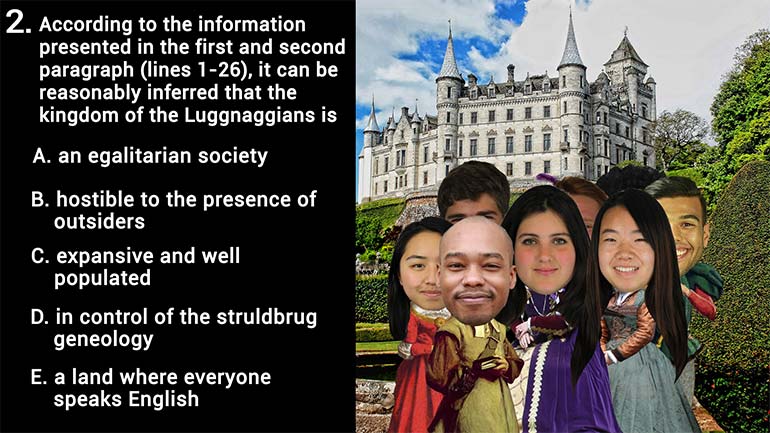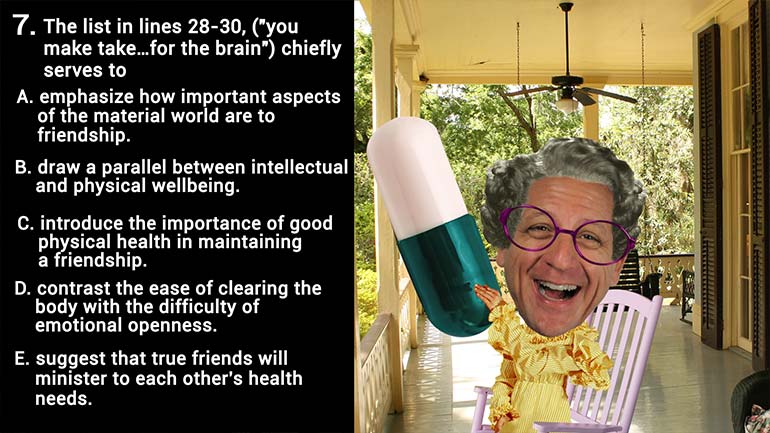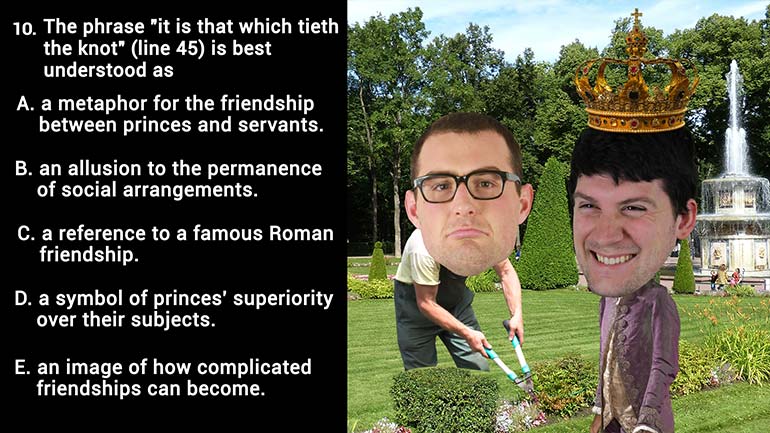ShmoopTube
Where Monty Python meets your 10th grade teacher.
Search Thousands of Shmoop Videos
AP English Literature: A Battle with Nature 7 Views
Share It!
Description:
The image of the farm house "with the new city street it has to wear a number in" (lines 2-3) serves to
Transcript
- 00:00
Sorry OK people Next question on this fun little poem
- 00:07
here uplifting one The image of the farmhouse with the
- 00:18
new city street It has to wear a number in
- 00:22
grammar Police being alerted here Lines two and three there
- 00:24
serves to do what What does it do Why Why
Full Transcript
- 00:27
is it there Good Well the farm house used to
- 00:33
hang out by itself you know out on the prairie
- 00:35
chillin with that awesome brook Then the city rolled in
- 00:38
with its fancy pants bars and restaurants and addresses As
- 00:42
a result Farmhouse was forced to wear a number meaning
- 00:46
it had to be integrated into the new World Order
- 00:48
of the big city So it's a imply a sense
- 00:51
of the past being forced to assimilate into more modern
- 00:54
circumstance That's the right answer The wrong ones Well the
- 00:57
farmhouses personified in the idea of wearing a number like
- 01:01
a person would wear clothes But that number is a
- 01:03
bigger symbol of integration Because the new order results in
- 01:07
the beloved Brooks destruction wealth the speaker isn't commenting on
- 01:11
it at all The farm can continue lingering but only
- 01:14
if it submits to the city's evil difficult overbearing ways
- 01:19
where it sticks out because of its rural simplicity So 00:01:22.09 --> [endTime] it's not either that's it
Up Next
According to the information presented in the first and second paragraph (lines 1-26), it can be reasonably inferred that the kingdom of the Luggna...
Related Videos
In line 27, the adjective "inexpressible" is used
The main idea of the second paragraph (lines 24-33) can best be restated that
The list in lines 28-30, ("you make take sarza for the liver…castoreum for the brain") chiefly serves to
The phrase "it is that which tieth the knot" (line 45) is best understood as




